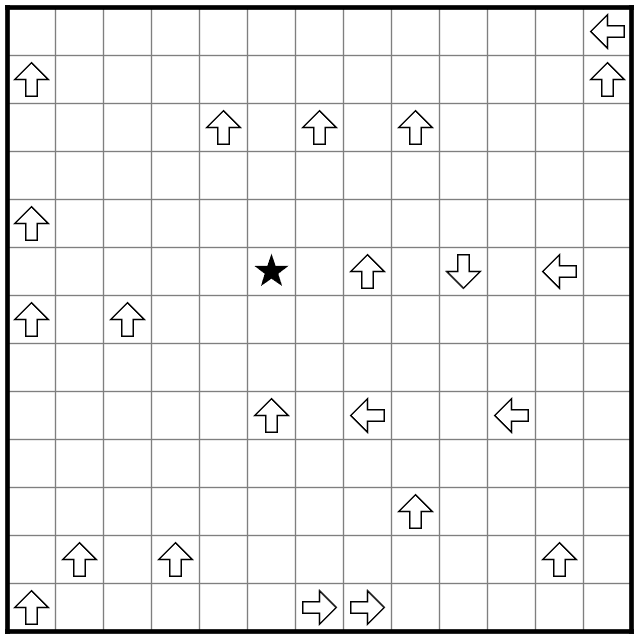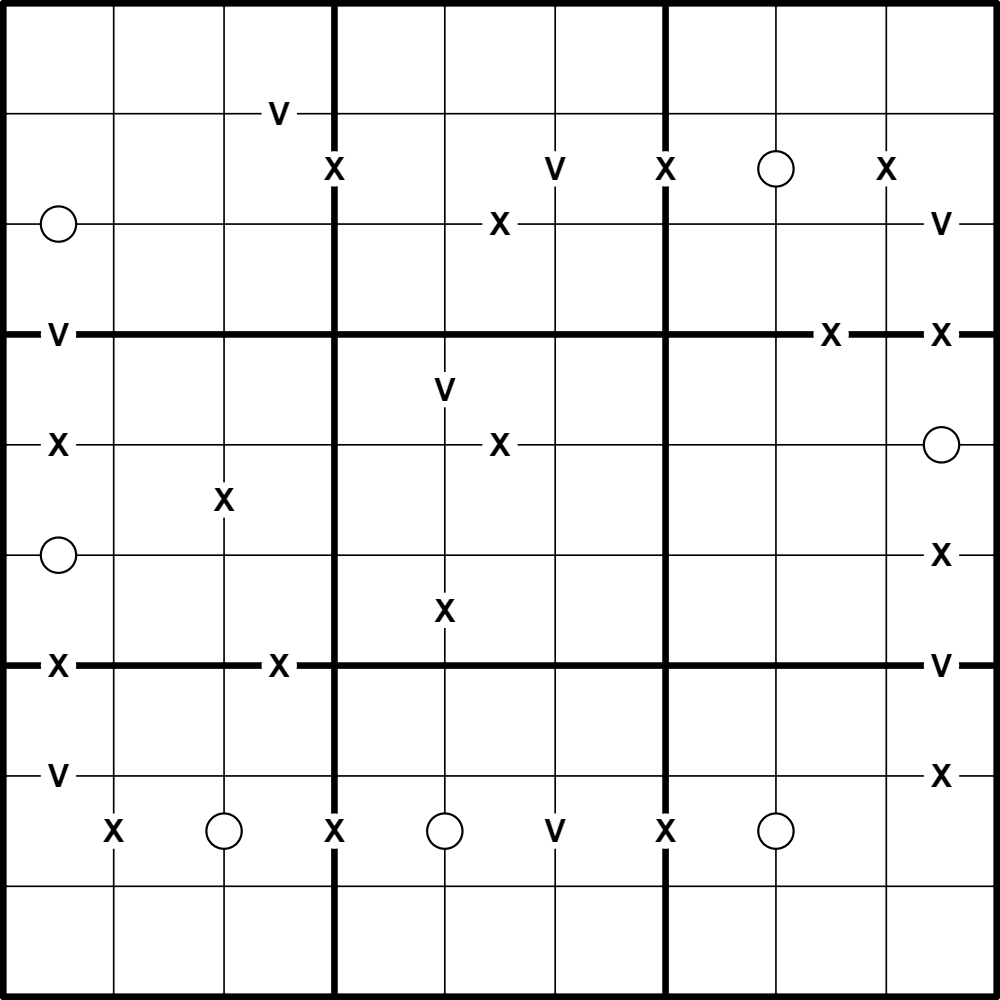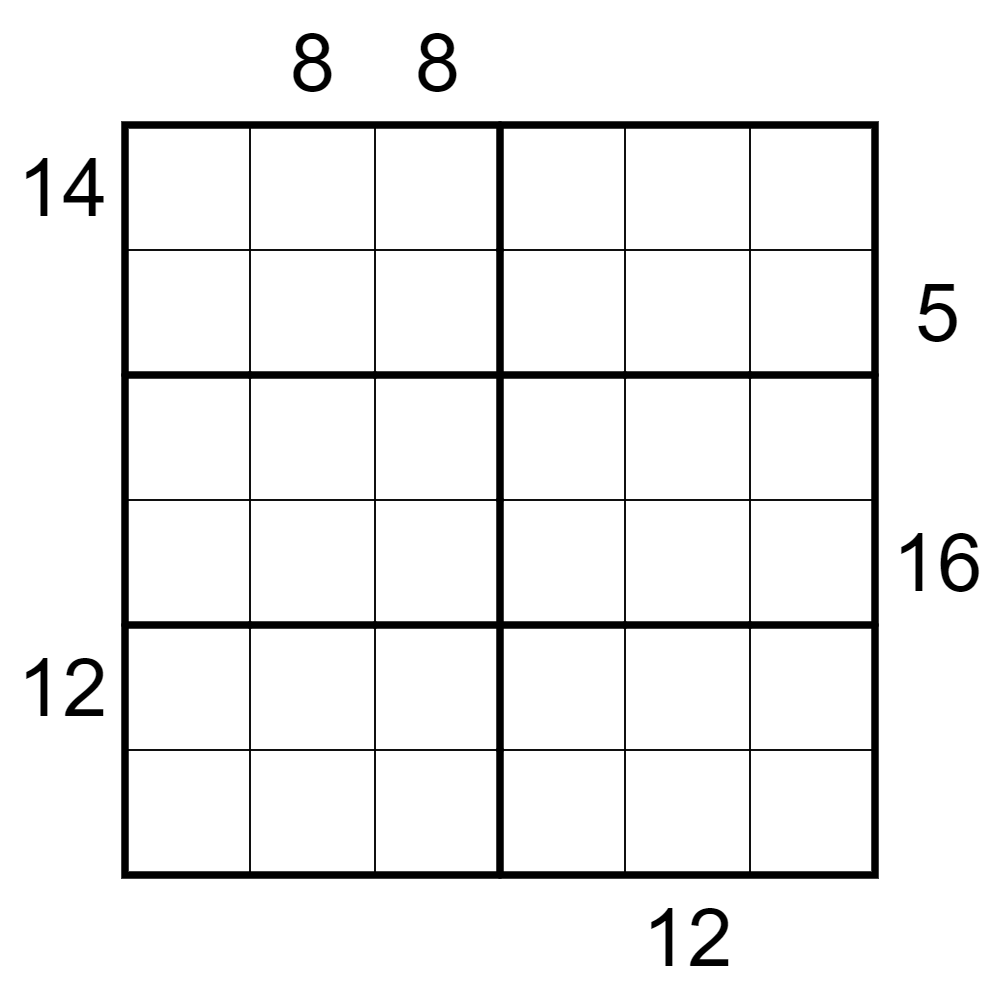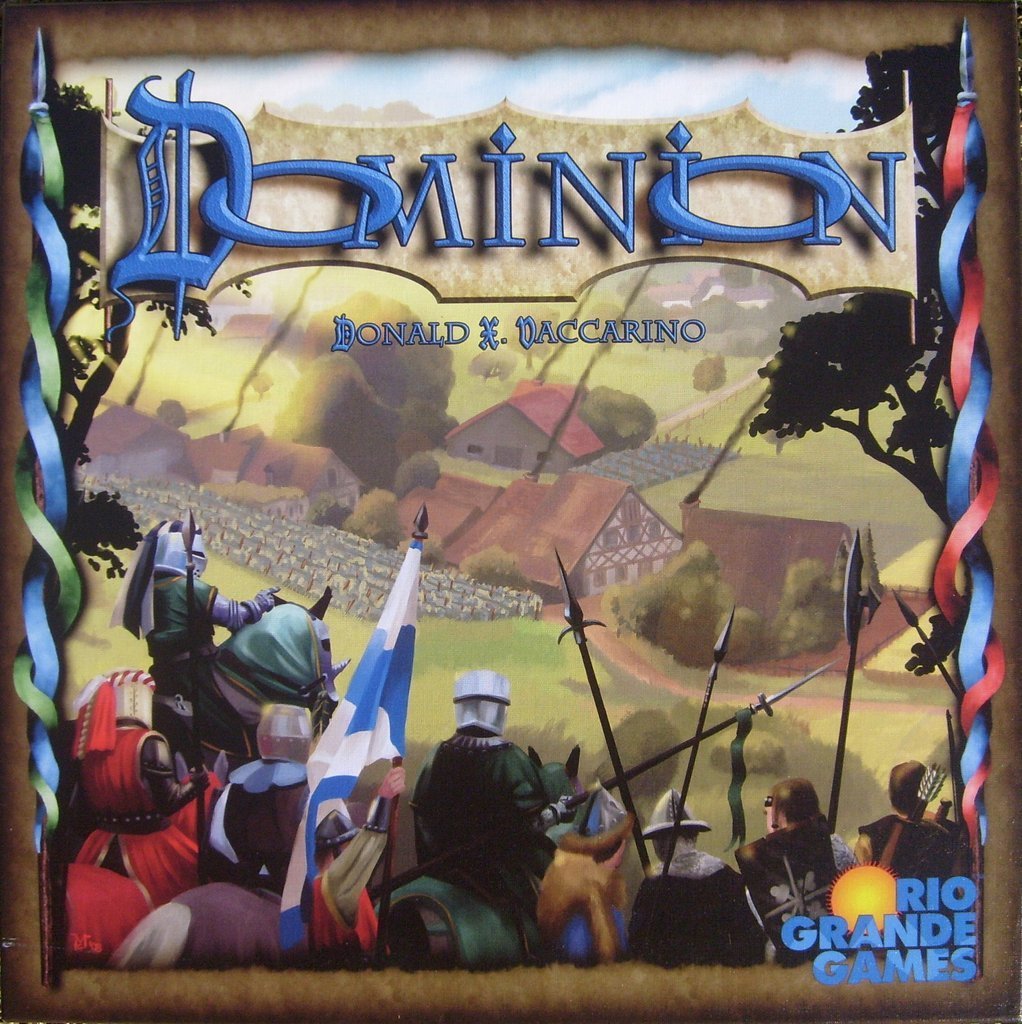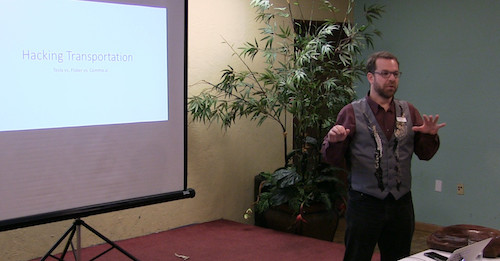Puzzles
Little logic puzzles, mostly sudokus.
Guide Arrow Puzzle Pack
by Kalliwyn
Download at:
Shade some empty cells so that no two shaded cells are orthogonally adjacent and the remaining unshaded cells form one orthogonally connected area. No complete loop of cells may be unshaded (including 2x2s). An arrow indicates the only direction in which one could begin a path to the star without going through a shaded cell or backtracking.
Around the World
by myShoggoth
Play at:
Normal sudoku rules apply. Digits separated by a white dot are consecutive. Not all dots are necessarily given. Digits separated by a V must sum to 5, and digits separated by an X must sum to 10. V and X are the roman numerals for 5 and 10, respectively.
X-Sums Snack
by myShoggoth
Play at:
Normal 6x6 sudoku rules apply. Clues outside the grid indicate the sum of the first X digits in that row or column, where X is the first digit seen.
